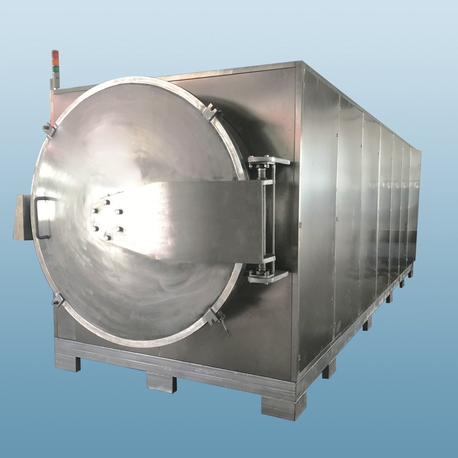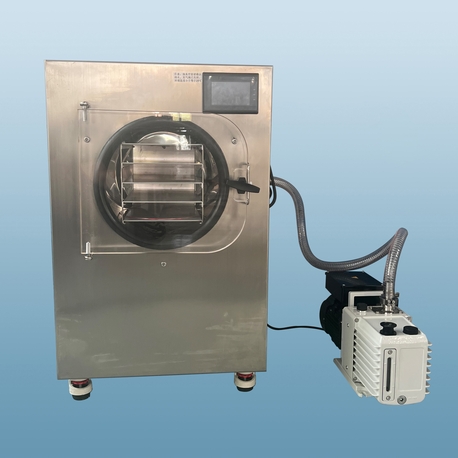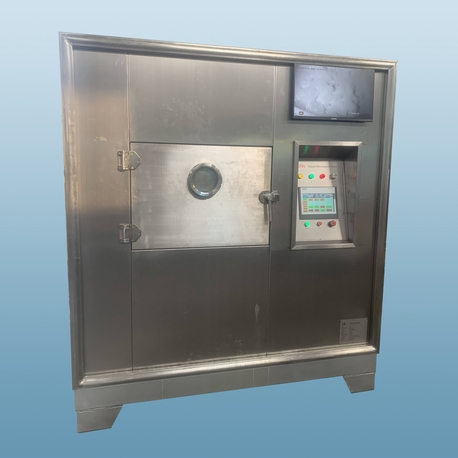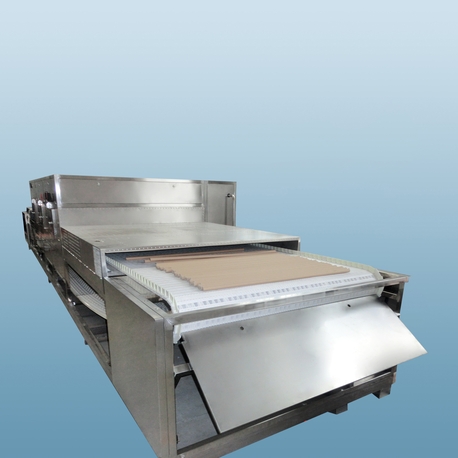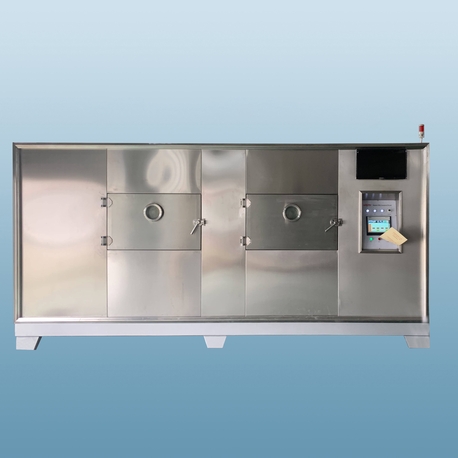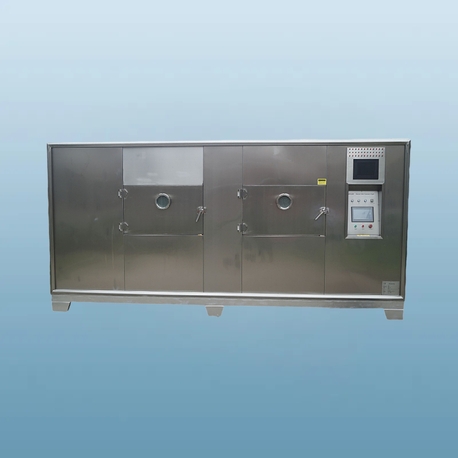In today's fast-paced world, industries ranging from food processing to pharmaceuticals are constantly seeking innovative methods to improve product quality, reduce costs, and enhance efficiency. One such groundbreaking technology that has gained attention is vacuum microwave dehydration. This method combines the principles of vacuum drying and microwave heating to achieve rapid, uniform dehydration while preserving the nutritional and sensory properties of materials. But what exactly is vacuum microwave dehydration, and why is it becoming a go-to solution for various sectors? In this article, we will delve into the intricacies of vacuum microwave dehydration, exploring its mechanisms, advantages, applications, and more. By the end, you'll have a comprehensive understanding of how vacuum microwave dehydration can revolutionize dehydration processes, making them faster, more efficient, and environmentally friendly. Whether you're in food production, healthcare, or manufacturing, this insight into vacuum microwave dehydration could be the key to unlocking new opportunities for your business.
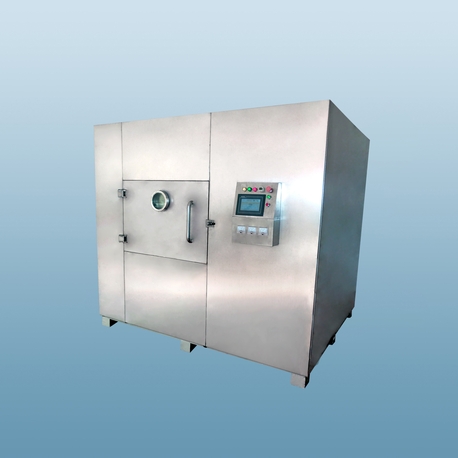
What Is Vacuum Microwave Dehydration?
Vacuum microwave dehydration is an advanced drying technique that integrates microwave energy with a vacuum environment to remove moisture from materials. Unlike conventional methods that rely on hot air or sun drying, this process uses electromagnetic waves to generate heat internally within the product, while the vacuum lowers the boiling point of water. This combination allows for rapid evaporation at lower temperatures, minimizing thermal damage and preserving essential qualities like color, flavor, and nutrients. Originally developed for specialized industrial applications, vacuum microwave dehydration has evolved to become a versatile solution for dehydrating sensitive materials such as fruits, vegetables, herbs, and even biological samples. The core principle involves placing the material in a sealed chamber where a vacuum is created, and microwaves are applied to excite water molecules, causing them to vaporize without overheating the product. This results in a high-quality, shelf-stable output that retains much of its original characteristics, making vacuum microwave dehydration a preferred choice for industries prioritizing product integrity.
How Does Vacuum Microwave Dehydration Work?
The operation of vacuum microwave dehydration hinges on the synergy between vacuum conditions and microwave irradiation. First, the material to be dehydrated is loaded into a chamber, and air is evacuated to create a low-pressure environment. This reduction in pressure lowers the boiling point of water, meaning that moisture can evaporate at temperatures as low as 20-40°C, compared to 100°C at atmospheric pressure. Simultaneously, microwaves at frequencies typically around 2450 MHz are introduced, which penetrate the material and cause water molecules to oscillate rapidly due to dielectric heating. This internal generation of heat ensures that drying occurs from the inside out, leading to uniform moisture removal and reducing the risk of case hardening—a common issue in traditional methods where the exterior dries faster than the interior. The vaporized water is then condensed and removed from the system, maintaining the vacuum integrity. This process not only speeds up dehydration times—often reducing them by 50-70% compared to conventional techniques—but also enhances energy efficiency. For instance, in food applications, vacuum microwave dehydration can complete drying in minutes rather than hours, while preserving heat-sensitive compounds like vitamins and antioxidants. The controlled nature of vacuum microwave dehydration makes it ideal for products that require precise moisture content, such as pharmaceuticals or electronic components, ensuring consistency and quality across batches.
Key Benefits of Vacuum Microwave Dehydration
Vacuum microwave dehydration offers a multitude of advantages that set it apart from other dehydration methods. Firstly, it excels in preserving the nutritional and sensory attributes of materials. By operating at lower temperatures and reducing exposure to oxygen, it minimizes the degradation of vitamins, enzymes, and flavors, which is crucial for health-conscious consumers and high-value products. Secondly, the speed and efficiency of vacuum microwave dehydration lead to significant energy savings and lower operational costs. Studies have shown that it can reduce energy consumption by up to 30-50% compared to hot air drying, as the direct heating mechanism avoids heat loss to the surroundings. Additionally, the uniform drying achieved through vacuum microwave dehydration results in better product quality, with reduced shrinkage, improved texture, and enhanced rehydration properties. This is particularly beneficial in the food industry, where appearance and taste are critical. Another key benefit is the versatility of vacuum microwave dehydration; it can handle a wide range of materials, from delicate herbs to robust grains, without compromising on performance. Environmentally, vacuum microwave dehydration is a greener alternative, as it often uses less water and produces fewer emissions. For businesses, this translates to improved sustainability profiles and compliance with regulatory standards. Overall, the benefits of vacuum microwave dehydration make it a compelling choice for industries looking to enhance productivity while maintaining high-quality standards.
Applications in Various Industries
The applications of vacuum microwave dehydration span multiple sectors, demonstrating its adaptability and effectiveness. In the food industry, it is widely used for producing snacks, dried fruits, and vegetables that retain their natural color, flavor, and nutrients. For example, companies employing vacuum microwave dehydration can create crispy apple chips or vibrant dried berries that appeal to health-minded consumers. The pharmaceutical industry leverages this technology for drying sensitive drugs, vaccines, and herbal extracts, where maintaining potency and stability is paramount. Vacuum microwave dehydration ensures that active ingredients are not degraded, supporting longer shelf lives and better efficacy. In agriculture, it aids in preserving seeds and crops, reducing post-harvest losses, and enabling year-round availability. The cosmetic industry also benefits from vacuum microwave dehydration for drying natural ingredients like aloe vera or plant extracts, which are used in skincare products. Moreover, in research and development, vacuum microwave dehydration is employed for processing biological samples and laboratory materials, providing consistent results. Even the textile and paper industries have adopted this method for drying specialized materials without causing damage. The broad applicability of vacuum microwave dehydration underscores its role as a transformative technology that can be tailored to meet diverse needs, driving innovation and efficiency across fields.

Comparison with Other Dehydration Methods
When comparing vacuum microwave dehydration to traditional methods like hot air drying, freeze-drying, or spray drying, several distinctions emerge. Hot air drying, one of the most common techniques, relies on convection heat, which can lead to uneven drying, nutrient loss, and longer processing times. In contrast, vacuum microwave dehydration offers faster and more uniform drying due to its internal heating mechanism, resulting in superior product quality. Freeze-drying, or lyophilization, is known for preserving nutrients but is often slower and more energy-intensive than vacuum microwave dehydration. While freeze-drying involves freezing the material and sublimating ice under vacuum, vacuum microwave dehydration operates at higher speeds and lower costs, making it more accessible for large-scale production. Spray drying, used for powders, can cause thermal degradation due to high temperatures, whereas vacuum microwave dehydration maintains lower thermal stress. However, vacuum microwave dehydration may have higher initial equipment costs compared to some conventional methods, but the long-term benefits in efficiency and quality often justify the investment. For instance, in side-by-side trials, products dehydrated using vacuum microwave dehydration typically show better retention of bioactive compounds and sensory attributes. This comparison highlights why vacuum microwave dehydration is gaining traction as a balanced solution that combines the best aspects of speed, quality, and cost-effectiveness.
Future Trends and Innovations in Vacuum Microwave Dehydration
The future of vacuum microwave dehydration looks promising, with ongoing research and technological advancements poised to expand its capabilities. One emerging trend is the integration of smart sensors and IoT (Internet of Things) into vacuum microwave dehydration systems, enabling real-time monitoring and optimization of drying parameters. This could lead to fully automated processes that adjust conditions based on material properties, further improving efficiency and consistency. Another area of innovation is in scaling down vacuum microwave dehydration for small-scale or portable applications, such as in-home food preservation or medical devices, making the technology more accessible. Additionally, efforts are underway to enhance the sustainability of vacuum microwave dehydration by incorporating renewable energy sources, like solar-powered microwaves, to reduce carbon footprints. Researchers are also exploring hybrid systems that combine vacuum microwave dehydration with other techniques, such as infrared or ultrasound, to achieve even better results for specific materials. In the food sector, there is a growing focus on using vacuum microwave dehydration for functional foods and nutraceuticals, where preserving bioactive compounds is critical. As global demand for high-quality, sustainable products rises, vacuum microwave dehydration is likely to play a pivotal role in shaping the future of dehydration technologies, driving innovation across industries.
Common Questions About Vacuum Microwave Dehydration
Q1: What types of materials are best suited for vacuum microwave dehydration?
A1: Vacuum microwave dehydration is highly effective for a wide range of materials, including fruits, vegetables, herbs, pharmaceuticals, and biological samples. It is particularly beneficial for heat-sensitive products that require preservation of nutrients, flavors, and colors, such as berries, leafy greens, and medicinal herbs. However, materials with very high oil content or those that are prone to burning may require adjusted parameters.
Q2: How does vacuum microwave dehydration impact the nutritional value of food?
A2: Vacuum microwave dehydration generally preserves nutritional value better than many traditional methods because it operates at lower temperatures and reduces exposure to oxygen. This minimizes the degradation of vitamins, antioxidants, and enzymes, resulting in healthier end products compared to those dried with hot air or sun drying.
Q3: Is vacuum microwave dehydration energy-efficient compared to other methods?
A3: Yes, vacuum microwave dehydration is often more energy-efficient due to its rapid drying times and direct heating mechanism. It can reduce energy consumption by 30-50% compared to conventional hot air drying, as it avoids heat loss and uses microwaves to target moisture directly, leading to lower operational costs over time.
Q4: What are the main challenges or limitations of vacuum microwave dehydration?
A4: Some challenges include higher initial equipment costs, the need for specialized training to operate the systems, and potential issues with uneven drying if not properly calibrated. Additionally, it may not be suitable for all materials, such as those with dense structures or high sugar content, which could caramelize under certain conditions.
Q5: Can vacuum microwave dehydration be used for home or small-scale applications?
A5: While vacuum microwave dehydration is primarily used in industrial settings, there are growing developments in compact and affordable units for small-scale or home use. These are ideal for hobbyists, small farms, or startups looking to preserve foods or create value-added products with high quality, though they may have limited capacity compared to industrial systems.
In conclusion, vacuum microwave dehydration represents a significant advancement in dehydration technology, offering speed, efficiency, and quality preservation that surpass many traditional methods. By understanding its principles, benefits, and applications, industries can harness this technology to achieve better outcomes. As innovations continue to emerge, vacuum microwave dehydration is set to become even more integral to modern processing, making it a topic worth exploring for anyone involved in dehydration processes.


